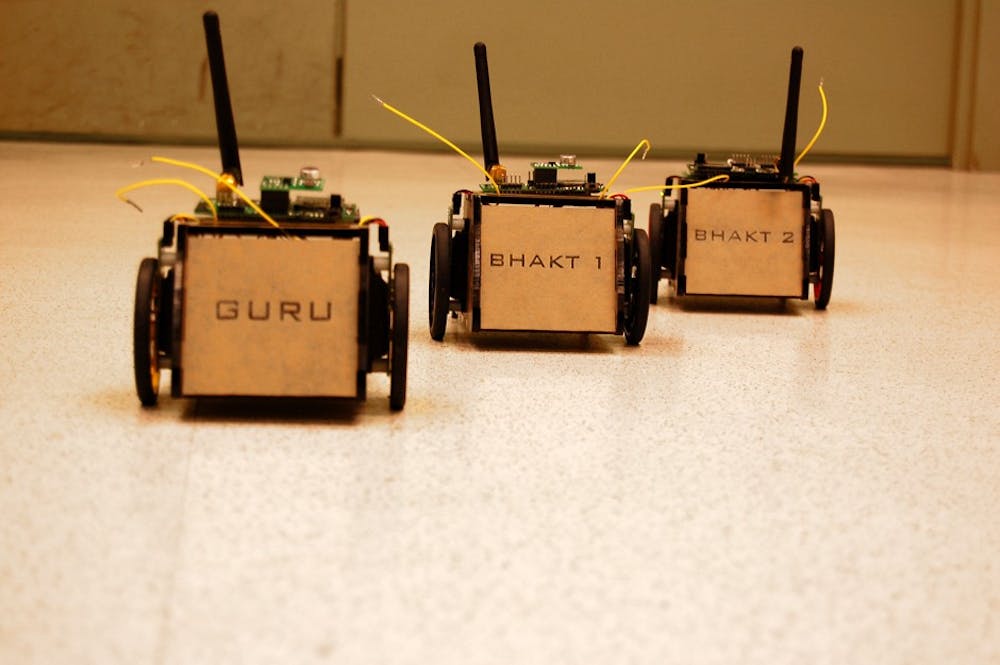
According to second-year Engineering graduate student Rahul Khosla, there is much more to the robots he helped program than their “funky name.”
Last semester, he and fellow Engineering graduate students Jitender Bishnoi and Saurabh Palan developed a robot application used to direct a set of robots termed “GuruBhakts.” The name comes from the Hindi words for “leader” and “follower,” respectively.
The robots function as a unit comprised of a “guru” leader robot and two “bhakt” robots designed to replicate their leader’s every move.
While the GuruBhakts themselves serve no practical purpose, further development of the applications they utilize may one day enable vehicles to navigate traffic by following GPS signals and avoiding collisions by communicating with one another.
The “guru” robot’s movements are controlled by manipulating a handheld wireless node, which the creators likened to a Nintendo Wii remote.
“Cars will not require driving … driving may become a form of automated communication between devices,” Khosla speculated.
Mangharam affirmed the possibility of GuruBhakt technology someday being applied to driverless cars.
“Almost 80 percent of accidents today are due to driver error. The idea of building robots like these is to demonstrate that autonomous operation is safe and reliable,” he said.
The GuruBhakts represent the growing field of swarm robotics, which examines how collective behaviors develop from both interactions among multiple robots and between multiple robots and the environment.
The project essentially tested the networking between the robots or, put simply, their ability to communicate, Palan said.
Bishnoi said the project was chosen mainly because of its integration of all three students’ backgrounds.
Khosla’s computer science experience enabled him to conduct most of the programming necessary to coordinate messages between the controller and the lead robot.
Bishnoi’s background in electronics led him to program the micro-controllers that send signals to the robots’ motors and wheels, while Palan, whose expertise lies in robotics, assembled the components and built both the mechanical structure and electronic features of the robots.
At the end of the fall, the team successfully navigated the GuruBhakts through an obstacle course and raced them against robots built by other students.
“There were some errors when the robots had to cover long distances but for lab results they worked fine,” Khosla said.
The students embarked on the project as part of their coursework for Real-Time and Embedded Systems, a class introduced as part of the School of Engineering and Applied Science’s recently launched Master’s Program in Embedded Systems.
“The idea here is getting together students’ knowledge about computer science and engineering to focus on the design aspect [of projects],” said Engineering professor Rahul Mangharam, who heads the course and oversaw the three students’ progress.
The Daily Pennsylvanian is an independent, student-run newspaper. Please consider making a donation to support the coverage that shapes the University. Your generosity ensures a future of strong journalism at Penn.
DonatePlease note All comments are eligible for publication in The Daily Pennsylvanian.





